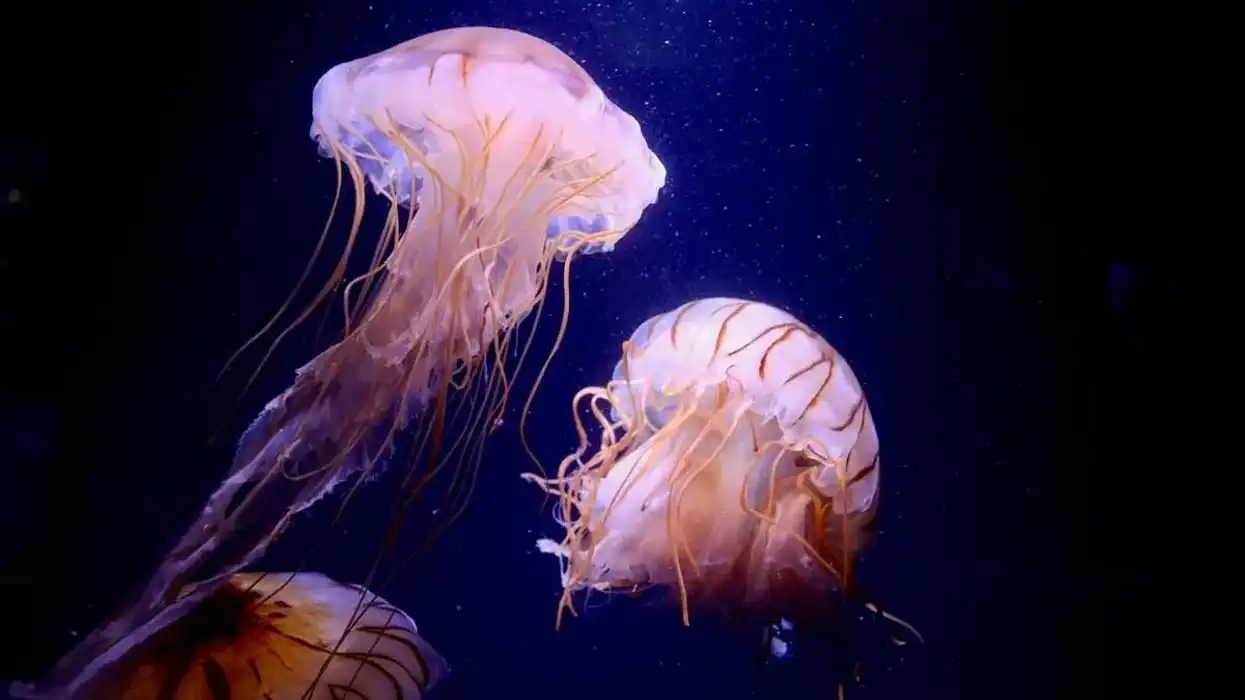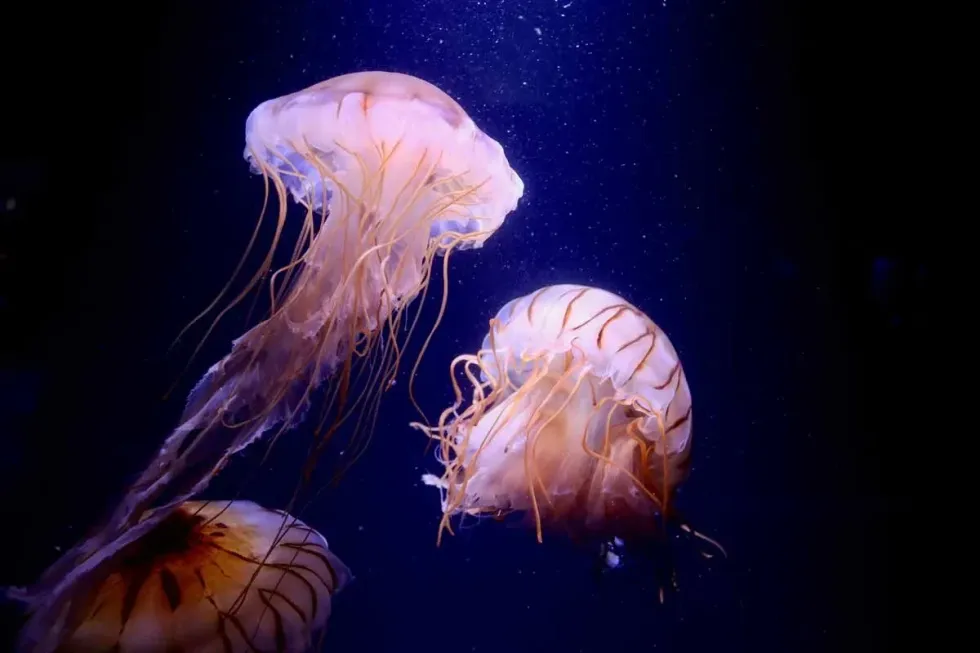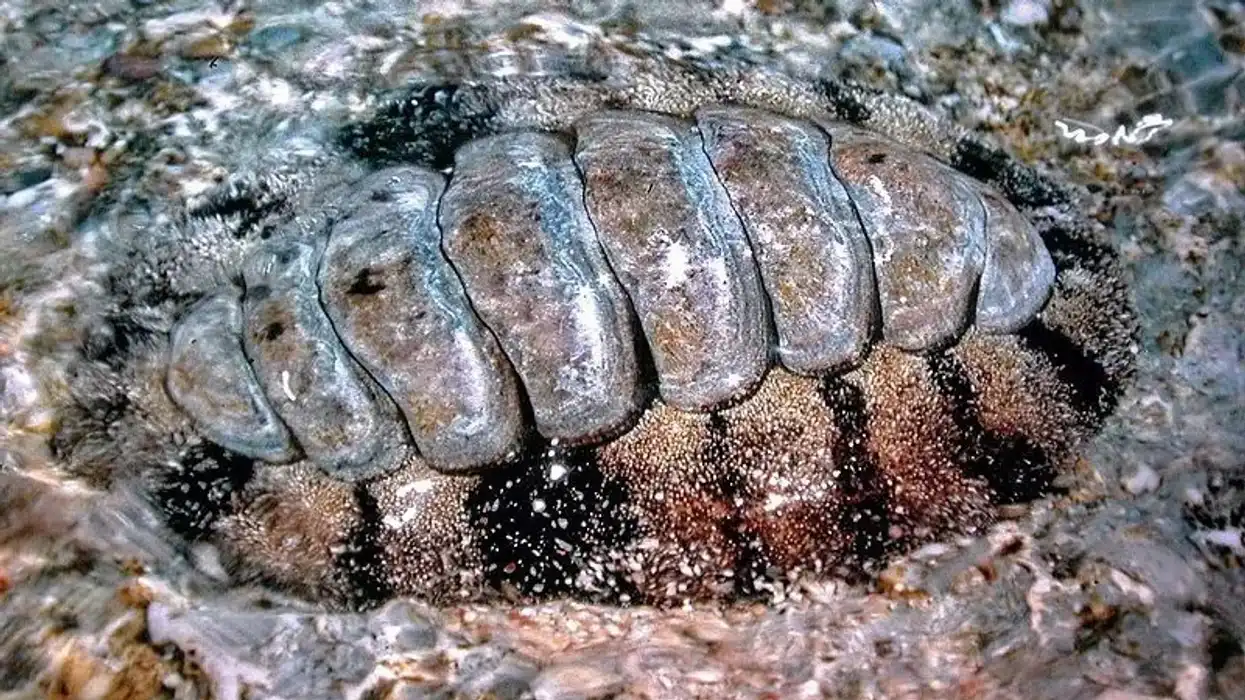Fun Irukandji Jellyfish Facts For Kids

The tiniest yet one of the deadliest creatures in the sea is the Irukandji jellyfish. Do not be fooled by their size as they can bring down a fully grown human with just a sting.
Irukandji jellyfish are venomous box jellyfish that come in many different varieties. They are among the smallest and most venomous jellyfish in the world. They live in Australias northern coastal waters.
They also have the ability to shoot their stingers into their prey, resulting in symptoms known as Irukandji syndrome. Irukandji syndrome is a life-threatening condition. There are approximately 16 species of Irukandji, and the most well-known of them are Carukia barnesi, Malo maxima, Malo filipina, Malo kingi, and Malo bella.
Irukandji jellyfish are small, with a bell ranging in size from 0.2-0.98 in (5-25 mm) in diameter. They have four tentacles that can grow up to 0.4-40 in (1-100 cm) in length.
Around their four tentacles, mature Irukandji have halo-like tissue bands. Irukandji jellyfish are made up of a translucent cuboidal bell that slightly narrows as it approaches the apex.
The tentacles and body are all coated with stinging cells known as nematocysts, although the form of stinging cells on these two areas of the body can vary. On either side of their bell, this box jellyfish has an undeveloped, transparent eye.
The first of the Irukandji jellyfish was discovered in 1964 by Jack Barnes, who caught it and allowed it to bite him, his nine-year-old son and a lifeguard in order to prove that they were the cause of Irukandji syndrome. They all fell critically ill, but thankfully they all survived.
'Killer Jellyfish', a documentary by Australian toxicologist Jamie Seymour, is about the Irukandji jellyfish.
Researchers in North Queensland found evidence that Irukandji jellyfish use their nematocyst clusters on their tentacles to lure fish. The fishes try to eat the tentacles but get stung instead, after which the Irukandji jellyfish eat them.
If you enjoyed reading facts about Irukandji jellyfish, you should check other articles on immortal jellyfish or jellyfish.
Irukandji Jellyfish Interesting Facts
What type of animal is an Irukandji jellyfish?
Irukandji jellyfishes (Carukia barnesi) are a planktonic marine animal.
What class of animal does an Irukandji jellyfish belong to?
The class of animal that Irukandji jellyfish belong to is cubozoa.
How many Irukandji jellyfish are there in the world?
Their population is not officially recorded, but there are 16 known species of this box jellyfish.
Where does an Irukandji jellyfish live?
Irukandji jellyfish live in the ocean around the coastline of Australia, such as North Queensland and Western Australia. They are also found in Australias northern waters.
What is an Irukandji jellyfish's habitat?
Irukandji, like other box jellyfish, prefer warm weather. They are specifically located off Australias northern coast, around the Great Barrier Reef.
Irukandji jellyfish habitats consist of shallow water and they live farther from the coast than any other box jellyfish. The Great Barrier Reef is massive, with many deeper parts, and this species of jellyfish dwells in water depths ranging from 33-66 ft (10-20 m).
They can be seen in shallow waters on occasion, but only because the current pushes them there.
Who do Irukandji jellyfish live with?
Irukandji jellyfish are found in swarms of their own species.
How long does an Irukandji jellyfish live?
An official study on the lifespan of Irukandji jellyfish has not been conducted.
How do they reproduce?
Irukandji jellyfishes mating mechanism has yet to be discovered, but in some cubazoan animals, adults release both eggs and sperm into the water where fertilization occurs. This process is called broadcast spawning.
Mature Carukia barnesi females have fully formed oocytes. When a male's bell height is equal to that of a mature female, he is considered to be mature.
What is their conservation status?
The official conservation status of Irukandji jellyfish by the IUCN is Not Evaluated.
Irukandji Jellyfish Fun Facts
What do Irukandji jellyfish look like?
Irukandji jellyfish are small bell-shaped creatures, ranging in size from 0.2-0.98 in (1-2.5 cm). Around their four tentacles, mature Irukandji jellyfishes have halo-like tissue bands. Irukandji jellyfish are made up of a translucent cuboidal bell that slightly narrows as it approaches the apex.
Four retractable tentacles extend from each side of the bell, ranging from 0.4-40 in (1-100 cm) in length. The tentacles and the body are all coated with stinging cells known as nematocysts. They also have transparent, undeveloped eyes on both sides of the bell.
*Please note that this is not an Irukandji jellyfish specifically. If you have an image of an Irukandji jellyfish, please let us know at hello@kidadl.com.

How cute are they?
If you find tiny things to be cute, then Irukandji jellyfish might just be your all-time favorite jellyfish.
How do they communicate?
It is still unclear if jellyfish can communicate in any way as they lack the brain they need to process information. But, their behavior while attracting food with their tentacles may be a sign of communication.
How big is an Irukandji jellyfish?
Irukandji jellyfish are small, with a bell ranging in size from 0.2-0.98 in (1-2.5 cm). They also have four long tentacles ranging from 0.4-40 in (1-100 cm) in length. This box jellyfish is about as big as a human nail.
How fast can an Irukandji jellyfish move?
This species of jellyfish are fast swimmers, but the exact speed of Irukandji is unknown due to the lack of research about this jellyfish species.
How much does an Irukandji jellyfish weigh?
This information is not available regarding this, but due to their small size they aren't believed to weigh much at all.
What are the male and female names of the species?
There are no specific names for males and females of this species.
What would you call a baby Irukandji jellyfish?
Baby Irukandji jellyfish are often referred to as ephyrae.
What do they eat?
Irukandji jellyfish eat non-insect arthropods and other marine invertebrates. Irukandji jellyfishes diet shifts from invertebrates to vertebrates as they mature.
To paralyze their victims, box jellyfish use venom. This venom is released into the prey as soon as the prey triggers one of the jellyfishes stinging cells (nematocysts).
When the stinging cell is activated, a harpoon-like coil is released, which stings the prey, and the jellyfish venom then flows through the prey via the harpoon. The tentacle will then retract back into the jellyfish, dragging the prey into the bells muzzle.
Are they dangerous?
These jellyfishes are extremely dangerous. An Irukandji jellyfish sting can cause Irukandji syndrome. Symptoms caused by an Irukandji sting can be severe back pain, chest pain, vomiting and breathlessness. If urgent first aid and a subsequent hospital visit aren't provided, these stings can be fatal.
Would they make a good pet?
They may be tiny, but these creatures are some of the most venomous jellyfish in the world. Getting stung by these box jellyfish can be fatal. Because of this, they are not ideal pets.
Did you know...
Irukandji stings have been recorded in great numbers around Great Palm Island, off the north Queensland coast near Townsville. At the beginning of December 2020, the number of stings registered had doubled from the previous years total of 12.
This species has also been seen off the coasts of Florida, Japan, and the United Kingdom, leading to speculation that they have spread farther north.
Cubozoans have a two-stage life cycle that includes both a medusa and a polyp. The planulae mature into motile feeding polyps that give rise to more budding polyps.
After a few months of maturation, polyps begin their metamorphosis by resorbing tentacles. There are four additional tentacles and four rhopalia. The single juvenile medusa contracts and swims away until they have completed their metamorphosis.
The life cycle and venom of these jellyfish are not widely understood or researched. This is partially due to their limited size and fragility, which necessitates special handling and containment.
Irukandji jellyfishes have stingers on both their tentacles and their bell. Other jellyfish have stingers only on their tentacles. Irukandji jellyfish can pump venom and sting from the tips of their tentacles.
The stings of Irukandji jellyfish are so painful that they can induce fatal brain hemorrhages, sending between 50 to 100 North Queensland bathers to the hospital each year. The easiest way to avoid these deadly jellyfish is to stay away from their natural habitats altogether. For example, if there are any reefs close to the shore, avoid that area.
The Irukandji jellyfish's sting
About 30 minutes after being stung by this jellyfish, the victim starts to feel the following symptoms: extreme lower back pain, headache, shooting pain in the chest, pain in abdominal muscles, nausea, agitation, restlessness, and sometimes vomiting. Fluid can sometimes occupy the lungs, which may be fatal if not treated.
These symptoms usually last from a few hours to several days, necessitating hospitalization. The contents of the venom have yet to be determined, but it may contain a neurotoxin that acts as a neural channel activator.
For this genus, no antivenom has yet been produced. Immediate first aid is a must in order to save someone who has been stung.
In North Queensland, the majority of stings occur during the summer, or wet season, which runs from October to May. Since these jellyfish are small and thin, the venom is only injected through the tips of the nematocysts (cnidocysts), therefore the sting can go unnoticed at first. They have been identified as having the sensation of a mosquito bite.
Antihistamines and anti-hypertensive medications are often used to control the symptoms such as inflammation and hypertension, while intravenous opioids like morphine and fentanyl are used to control discomfort symptoms. Magnesium sulfate has been used to treat Irukandji syndrome pain and hypertension, but it has little impact on the other symptoms.
Irukandji jellyfish are generally found along the coast, where the colder water attracts them, but blooms have been seen offshore.
A single sting is usually not lethal if handled correctly, but two people in Australia are thought to have died from Irukandji jellyfish stings in 2002 following a series of outbreaks on the northern coast of Australia, raising public awareness of the syndrome.
Apart from the sting of Carukia barnesi and Malo kingi, no other jellyfish species is known to cause Irukandji syndrome upon being stung.
Are Irukandjis the smallest jellyfish?
Irukandji is the world's smallest jellyfish, measuring just 0.2-0.98 in (1-2.5 cm) in diameter, but they have a reputation for being one of the deadliest species in North Queenslands coastal and coral waters.
Here at Kidadl, we have carefully created lots of interesting family-friendly animal facts for everyone to discover! Learn more about some other arthropods, including black carpenter ant and brain coral.
You can even occupy yourself at home by drawing one of our Irukandji jellyfish coloring pages.
We Want Your Photos!
More for You
Bachelor of Commerce specializing in Accounting and Finance, Master of Business Administration

Divya RaghavBachelor of Commerce specializing in Accounting and Finance, Master of Business Administration
With a diverse range of experience in finance, administration, and operations, Divya is a diligent worker known for her attention to detail. Born and raised in Bangalore, she completed her Bachelor's in Commerce from Christ University and is now pursuing an MBA at Narsee Monjee Institute of Management Studies, Bangalore. Along with her professional pursuits, Divya has a passion for baking, dancing, and writing content. She is also an avid animal lover who dedicates her time to volunteering for animal welfare causes.
Bachelor of Arts specializing in English Literature

Deeti GuptaBachelor of Arts specializing in English Literature
A detail-oriented fact-checker with a research-oriented approach. Devika has a passion for creative writing, she has been published on multiple digital publishing platforms and editorials before joining the Kidadl team. Currently pursuing a Bachelor of Arts in English Literature from St.Xavier's College, Deeti has won several accolades and writing competitions throughout her academic career.
Disclaimer
1) Kidadl is independent and to make our service free to you the reader we are supported by advertising. We hope you love our recommendations for products and services! What we suggest is selected independently by the Kidadl team. If you purchase using the Buy Now button we may earn a small commission. This does not influence our choices. Prices are correct and items are available at the time the article was published but we cannot guarantee that on the time of reading. Please note that Kidadl is a participant in the Amazon Services LLC Associates Program, an affiliate advertising program designed to provide a means for sites to earn advertising fees by advertising and linking to Amazon. We also link to other websites, but are not responsible for their content.
2) At Kidadl, we strive to recommend the very best activities and events. We will always aim to give you accurate information at the date of publication - however, information does change, so it’s important you do your own research, double-check and make the decision that is right for your family. We recognise that not all activities and ideas are appropriate for all children and families or in all circumstances. Our recommended activities are based on age but these are a guide. We recommend that these ideas are used as inspiration, that ideas are undertaken with appropriate adult supervision, and that each adult uses their own discretion and knowledge of their children to consider the safety and suitability. Kidadl cannot accept liability for the execution of these ideas, and parental supervision is advised at all times, as safety is paramount. Anyone using the information provided by Kidadl does so at their own risk and we can not accept liability if things go wrong.
3) Because we are an educational resource, we have quotes and facts about a range of historical and modern figures. We do not endorse the actions of or rhetoric of all the people included in these collections, but we think they are important for growing minds to learn about under the guidance of parents or guardians.







